Complete Solutions to Exercise 2.3 of chapter RIGID BODY DYNAMICS 1 of Class 11 book with complete answers and questions
| Class 11 | PHYSICS |
| Chapter | RIGID BODY DYNAMICS 1 |
| CENGAGE PHYSICS | Exercise 2.3 |
| Number Of Questions | 15 |
| Academic Year | 2023-24 |
A uniform cube of side a and mass `m` rests on a rough horizontal table. A horizontal force `F` is applied normal to one of the faces at a point directly above the centre of the face, at a height `(3a)/(4)` above the base. What is the minimum value of `F` for which the cube begins to tip about an edge?
03:23View Solution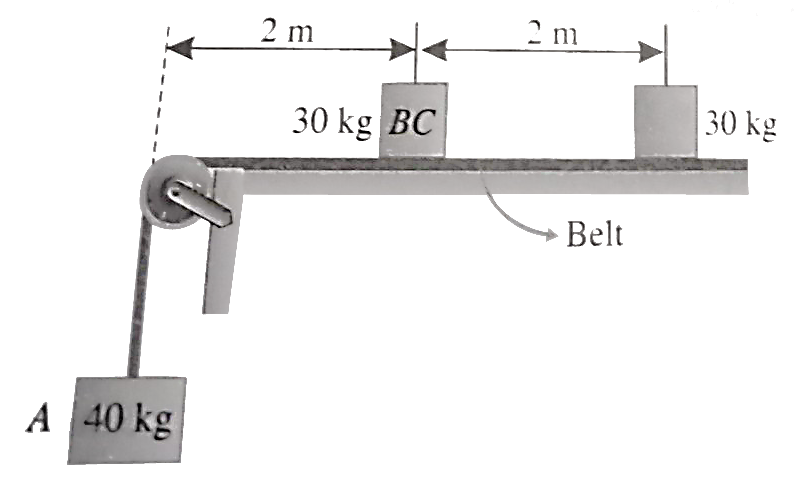
Two 30 kg blocks rest on a massless belt which passes over a fixed pulley and is attached to a 40 kg block. If coefficient of friction between the belt and the table as well as between the belt and the blocks B and C is `mu` and the system is released from rest from the position shown, the speed with which the block B falls off the belt is05:38View SolutionA beam of weight `W` supports a block of weight `W`. The length of the beam is `L`. and weight is at a distance `L/4` from the left end of the beam. The beam rests on two rigid supports at its ends. Find the reactions of the supports.
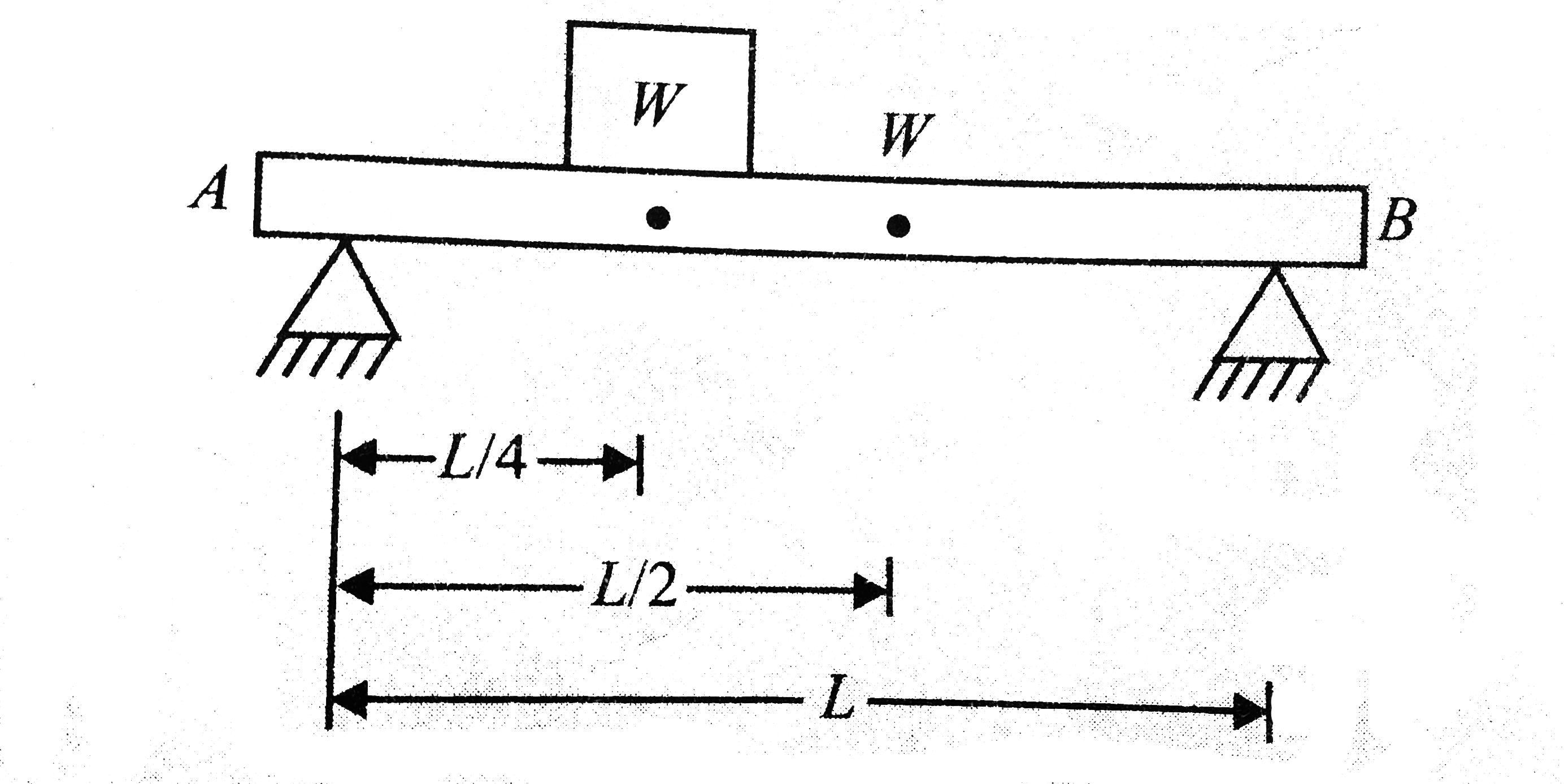 03:44View Solution
03:44View SolutionA uniform ladder of mass 10 g leans agais ta smooth vertical wall making an angle of `53^0` with it. The other end rests on a rough horizontal floor. Find the normal force and the frictinal force that the floor exerts on the ladder
07:09View SolutionA uniform ladder of length 10.0 m and mas 16.0 kg is resting against a vertical wall making an angle of `37^@` with it. An electrician weighing 60.0 kg climbs up the ladder. If the stays on the ladder at a point 8.00 m from the lower end, will be normal force and the force of friction on the ladder by the ground? What should be the minimum coefficient of friction for the electrician to work safely?
05:08View SolutionA uniform rod of length L rests against a smooth roller as shown in figure. Find the friction coefficeint between the ground and the lower end if the minimum angle that rod can make with the horizontal is `theta`.
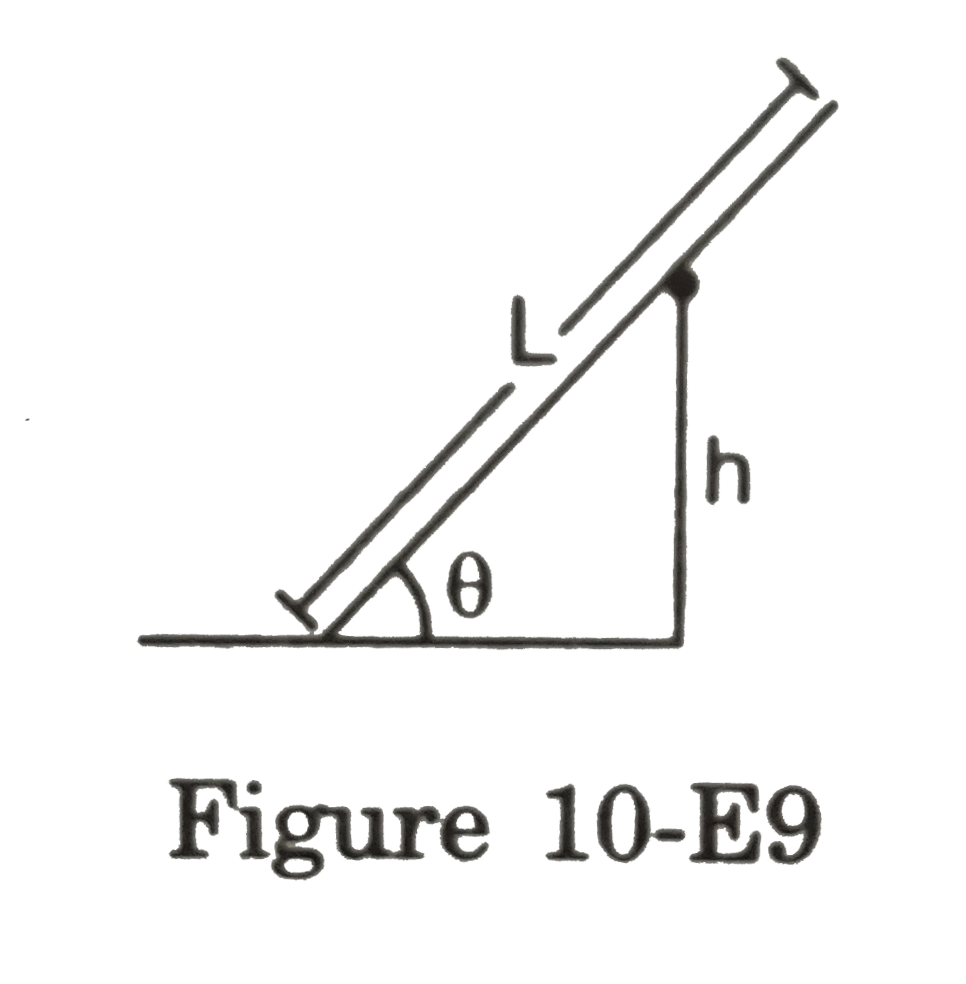 06:04View Solution
06:04View SolutionThe ladder shown in figure has negligible mass and rests on a frictionless floor. The crossbar connects the two legs of the ladder at the middle. The angle between the two legs is `60^0`. The fat person sitting on the ladder thas a mas of 80 kg. Find the contact force exerted by the floor on each leg and the tension in the cross bar.
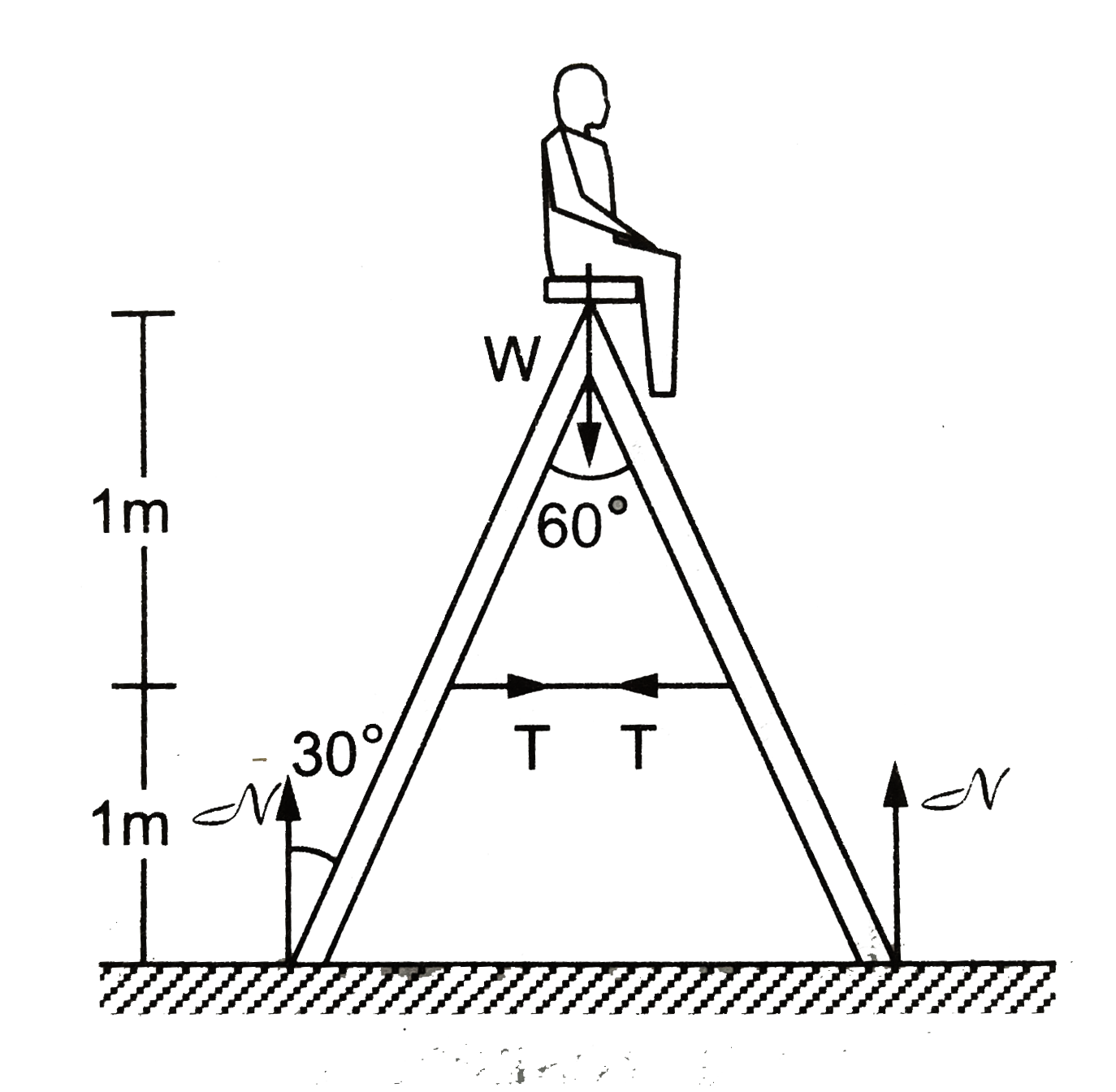 03:38View Solution
03:38View SolutionA uniform rod of length `l` and mass `m` is hung from, strings of equal length from a ceiling as shown in figure. Determine the tensions in the strings?
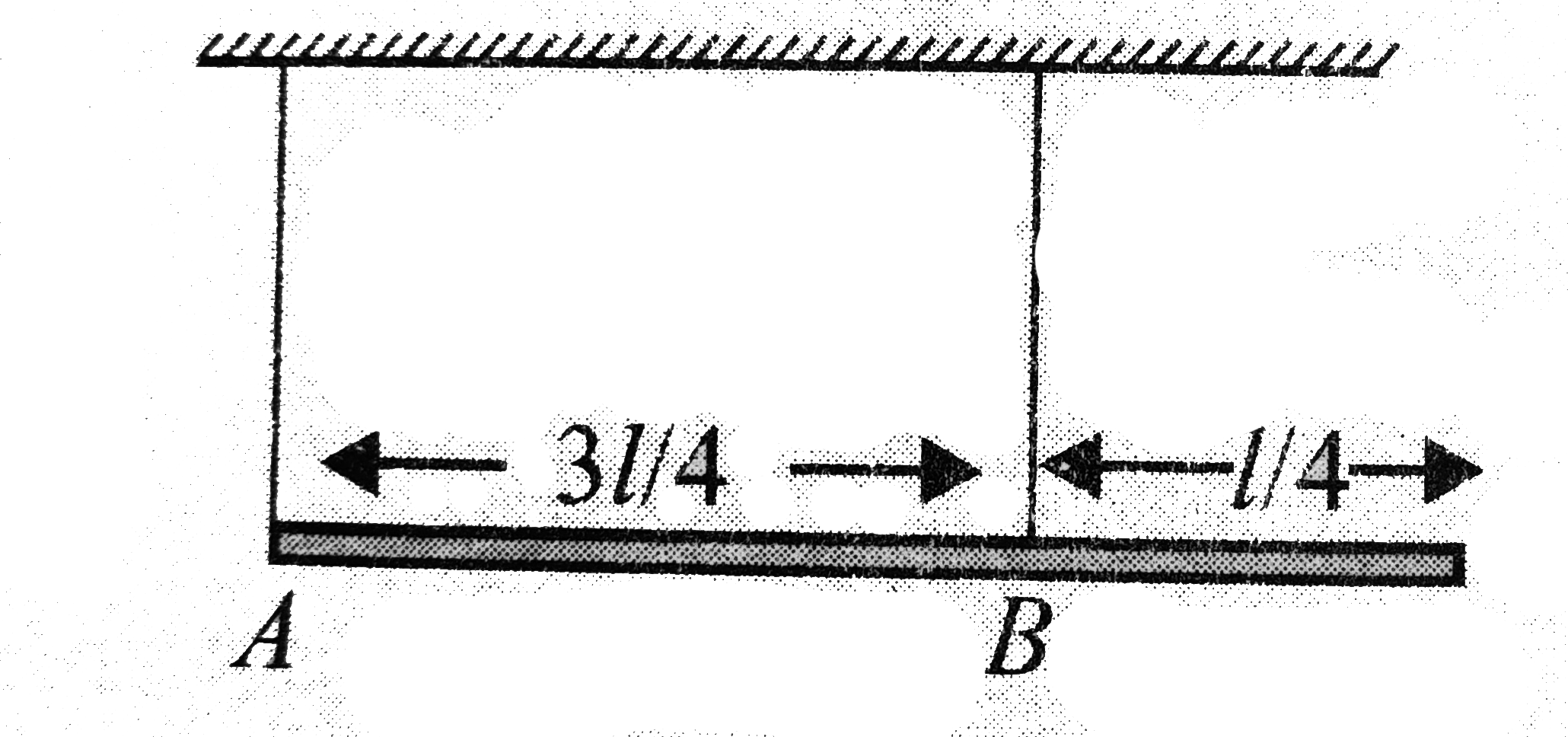 02:04View Solution
02:04View SolutionA uniform ladder of length `L` and mass `m_(1)` rests against a frictionless wall. The ladder makes an angle `theta` with the horizontal. (a) Find the horizontal and vertical forces the ground exerts on the base of the ladder when a firefighter of mass `m_(2)` is a distance `x` from the bottom. (b) If the ladder is just on the verge of slipping when the firefighter is a distance d from the bottom, what is the coefficient of static friction between ladder and ground?
06:23View SolutionA uniform beam of mass `m` is inclined at an angle `theta` to the horizontal. Its upper end produces a ninety degree bend in a very rough rope tied to a wall, and its lower end rests on a rough floor (a) If the coefficient of static friction between beam and floor is `mu_(s)` determine an expression for the maximum mass `M` that can be suspended from the top before the beam slips. (b) Determine the magnitude of the reaction force at the floor and the magnitude of the force exerted by the beam on the rope at `P` in terms of `m, M` and `mu_(s)`
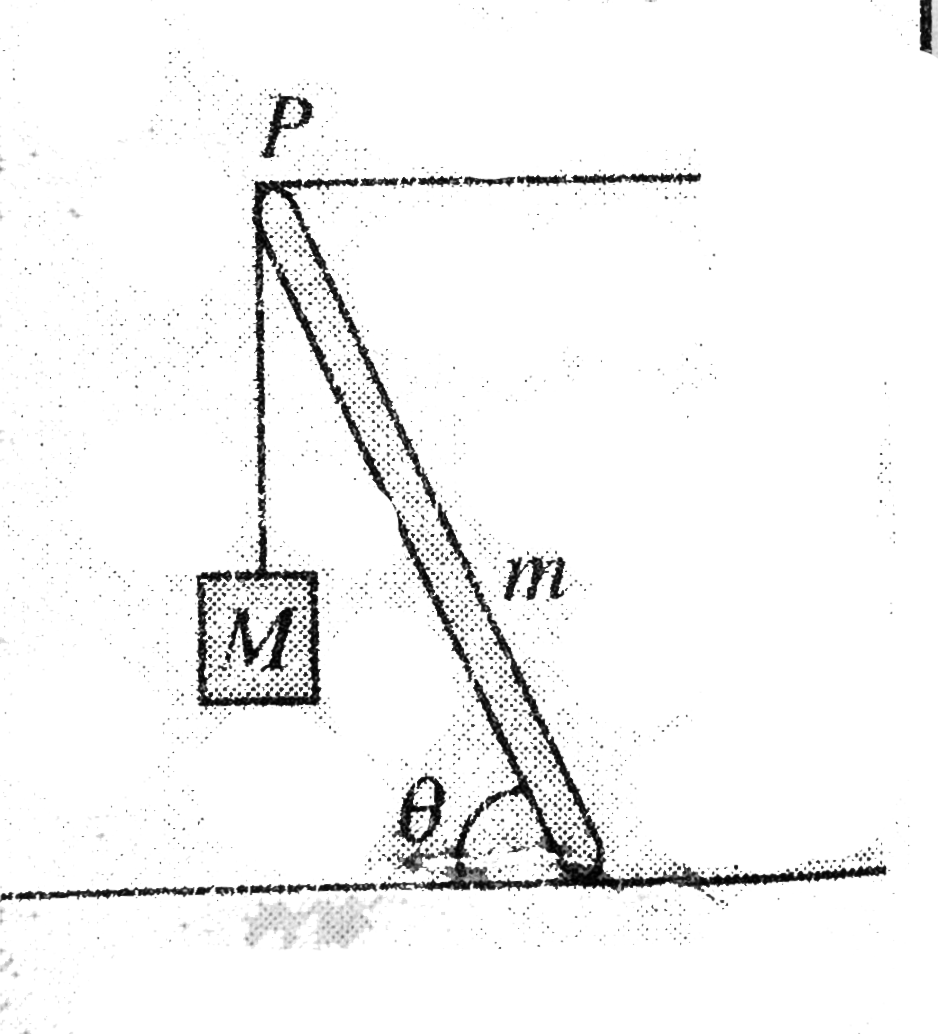 . 08:12View Solution
. 08:12View SolutionA uniform rod of weight `F_(g)` and length `L` is supported at its ends by a frictionless through as shown in figure. (a) Show that the centre of gravity of the rod must be vertically over point `O` when the rod is in equilibrium. (b) Determine the equilibrium value of the angle `theta`.
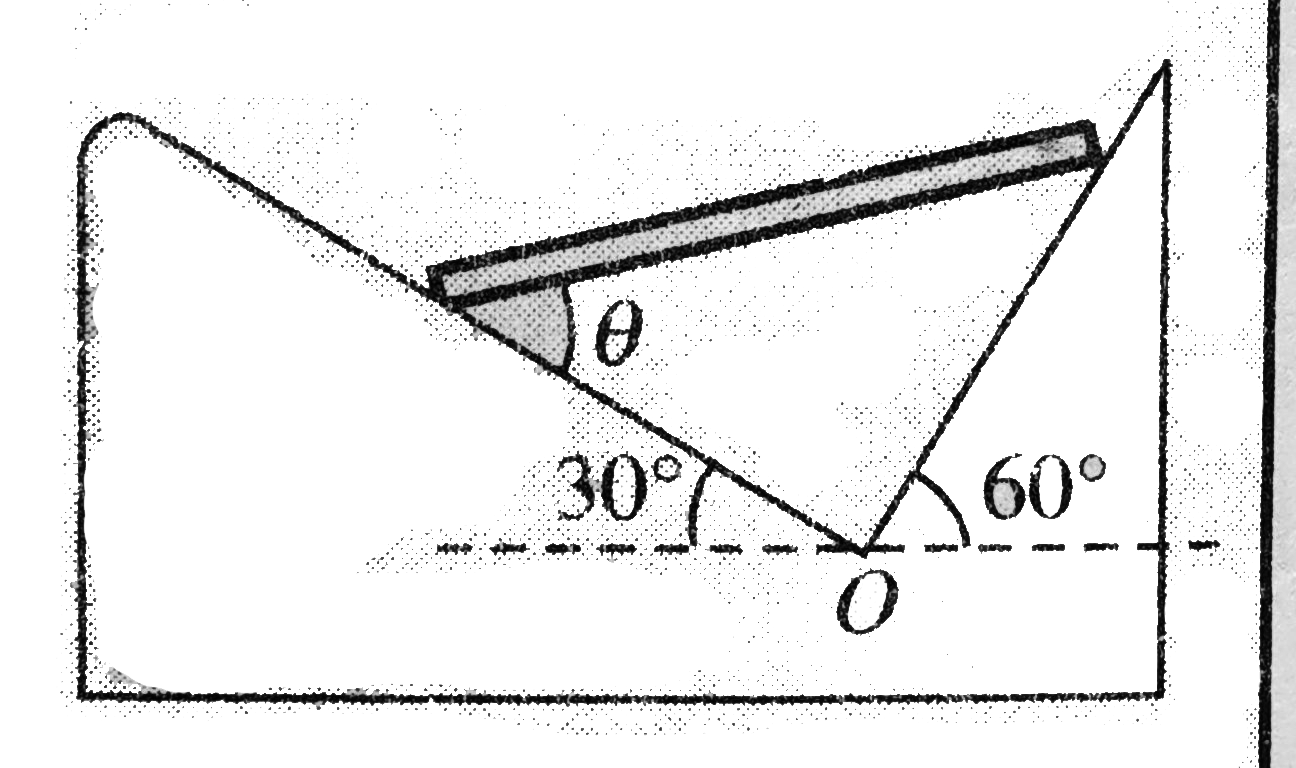 05:06View Solution
05:06View SolutionFigure shows a vertical force applied tangentially to a uniform cylinder of weight `F_(g)`. The coefficient of static friction between the cylinder and all surfaces is `0.500`. In terms of `F_(g)` , find the maximum force `P` that can be applied that does not cause the cylinder to rotate.
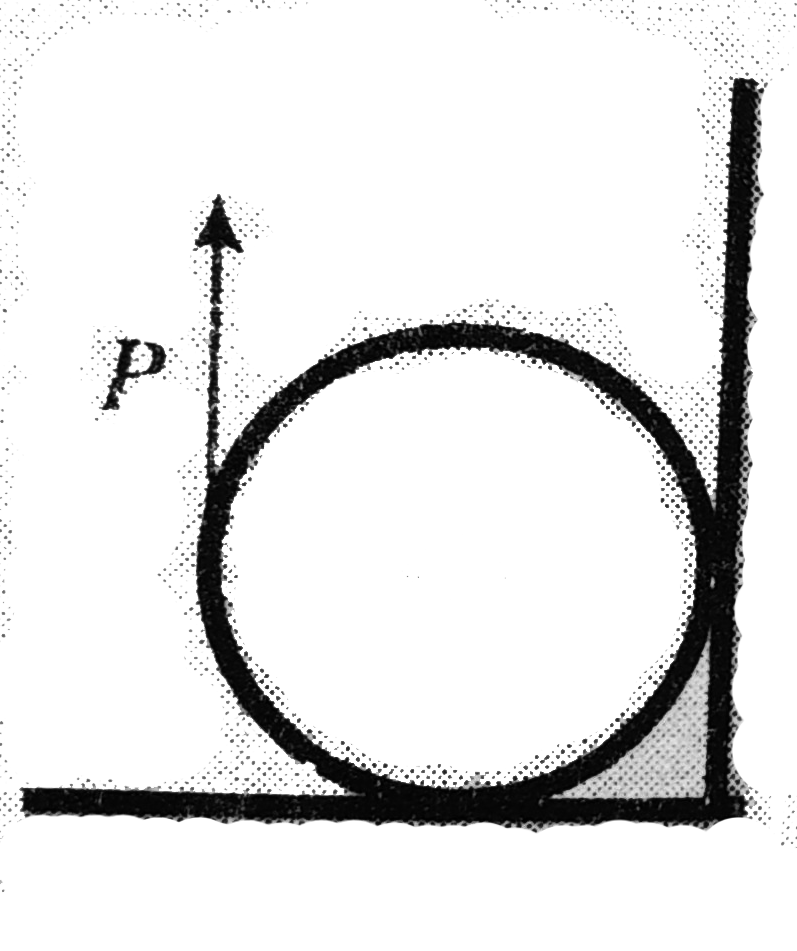 07:59View Solution
07:59View SolutionA trailer with loaded weight`F_(g)` is being pulled by a vehicle with a force `P`, as in figure. The trailer is loaded such that its centre of mass is located as shown. Neglect the force of rolling friction and let a represent the `x` component of the acceleration of the trailer. (a) Find the vertical component of `P` in terms of the given parameters. (b) If a` =2.00 ms^(-2)` and `h = 1.50 m`, what must be the value of `d` in order that `P = 0` (no vertical load on the vehicle)?
 08:15View Solution
08:15View SolutionA bicycle is traveling downhill at a high speed. Suddenly, the cyclist sees that a bridge ahead has collapsed, so she has to stop. What is the maximum magnitude of acceleration the bicycle can have if it is not to flip over its front wheel—in particular, if its rear wheel is not to leave the ground? The slope makes an angle of `37^@` with the horizontal. On level ground, the centre of mass of the woman–bicycle system is at a point `1.0 m` above the ground, `1.0 m` horizontally behind the axle of the front wheel, and `35.0` cm in front of the rear axle. Assume that the tires do not skid.
08:10View SolutionThe weight of an object on the surface of the Earth is 40 N. Its weight at a height equal to the radius of the Earth is
01:50View Solution
Exercise 2.3 questions and complete solutions for chapter RIGID BODY DYNAMICS 1 of CENGAGE PHYSICS (ENGLISH) of Class 11
